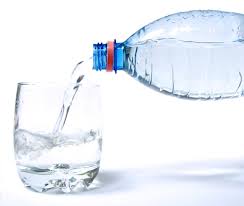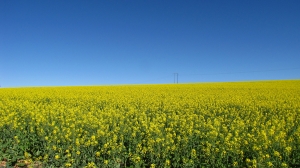I have a confession: I drink bottled water!
The recent vilification of bottled water drinkers is most disturbing to me. I’m not oblivious to its negative impact on the environment and the overall absurdity of paying for water.
Lately, news of the danger of plastic drink containers leaching harmful chemicals into their contents, the environmental costs of transporting water, and the problem of properly disposing of the containers (recycling) have caused some to re-examine the intelligence of consuming bottled water. Some jurisdictions are even toying with banning the sale of bottled water.
I embraced bottled water years ago, not for the fad but the taste of it. I despise soft drinks; too sweet, too fizzy (make me belch; not becoming) and loaded with harmful substances. I’ve never liked the taste of coffee or tea, except some herbal teas. So I drink water.
Before bottled water my request for water with my burger was met with a disdainful glazing of eyeballs. I had to endure tap water in wax-lined paper cups, invariably with ice that tasted of dirt and refrigerator. Usually it was dispensed from the wash-up sink, an area of questionable sanitation. Depending on the season, there was an added cocktail of chlorine and dissolved organic matter that had surpassed the city’s treatment capabilities. I was often charged for this swill, because, I was told, of the cost of the cup!
I grew up on non-chlorinated well water so tap water smells (and therefore tastes) like a toilet or a swimming pool to me. The only way I can stomach the water I order in a restaurant is to get a lemon slice with it. Not every restaurant or vendor provides lemon (and one study found the germs from the bar staff’s hands contaminate the water via contact with the lemon skin).
I also object to the fluoridation of public water. Our city added this toxic industrial by-product to our water for 20 years. (Council recently voted to abandon the practice, citing cost savings).
My consumption of water greatly increased with the installation of a water cooler in my home. Sure, I could have a container with a filter in my fridge but I’ve been turned off by the mold on other people’s filters and that “fridge” taste of their water.
Now that I’ve defended my reasons for choosing bottled water, I want to know why has not one word has been breathed about banning soft drinks!
Soft drinks also come in plastic bottles capable of leeching noxious chemicals into their contents. Perhaps nobody cares because soft drinks are already loaded with sugar or (neuro-toxic) artificial sweeteners and other chemicals like phosphoric acid, a known dissolver of bones and other mineral compositions in the body. Most also have caffeine, another culprit in the deterioration of our health, especially when over-consumed.
Why is there not a movement to save the environment by not transporting soft drinks? How much global warming could be reduced if there were no plants churning out thousands of bottles of pop each day? And no trucks delivering it to stores? Or no refrigerators to keep it cold, at the ready for thirsty customers?
Sure, the odd school board has banned non-nutritious beverages from their vending machines. But parents routinely fill their shopping carts with soft drinks and buy their children fast food meals, which often include a soda with their deep fried entrees. Then they wonder why their children are threatened with obesity. (Clearly good nutrition is not motivation for the average parent’s choices). Why aren’t they connecting the dots?
Significantly more bottled soft drinks are consumed than bottled water but there is no squawking about all the non-recycled pop bottles or the cost of transporting that product. Perhaps it’s because shutting down Coke and Pepsi is not an option: too many people own their stock and rely on their products to get through the day! Their consumption is so pervasive in the general population that banning soft drinks would be akin to banning coffee.
Admittedly, not all bottled waters are created equally. Some water comes from springs and other so-called natural sources, but nobody is required to measure the purity of it. That muddies the waters, so to speak, for me. Other brands are filtered tap water; some taste better than others. Coke’s Dasani is filtered tap water with salt, which accounts for its odd taste.
It may seem stupid to you that I pay for filtered water; I will admit it is arguably rather frivolous. But if that’s what it takes for me to drink the recommended eight or so glasses of water each day, nobody should have the right to tell me I can’t take delivery of it in a bottle, just like my colleague’s Diet Coke.


